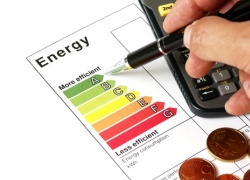Achieving data center sustainability with effective power management
Achieving data center sustainability with effective power management

It takes a lot of energy to keep servers up and running in the data center. Not to mention, cooling components, which account for an average of 40 percent of energy consumption, guzzle power as they ensure that temperatures stay within an allowable range.
That said, not all of the electrical operational expenses in a data center are necessary. In fact, the Natural Resource Defense Council has argued that data centers could hypothetically scale back on power usage by 40 percent without inhibiting facility performance.
The good news is that in the past few years, many data centers have been able to reap savings by increasing the allowable temperatures. While definitely a good start, the next step is to improve energy efficiency by going more directly to the source: power distribution.
The problem of resource waste
"Zombie servers account for nearly 30 percent of servers worldwide."
The NRDC predicts a notable spike in the amount of money businesses will need to pay to keep the lights on in data centers – by 2020, American businesses will be paying about $13 billion every year. While some of this is the inevitable result of increasing digitization and the impending explosion of big data, some of it will likely be caused by poor power distribution.
An ongoing issue, and one that we've discussed in previous blog posts, is the problem of zombie servers, which according to Anthesis Group, account for nearly 30 percent of servers worldwide. These comatose servers eat up energy in order to stay on, but aren't actually being used for anything. It's possible that as the need for more data center space becomes apparent in years to come, facility operators will become more attentive to this waste as they move to higher-density models.
In the meantime, these comatose servers will continue to waste energy if nothing is done about them. Furthermore, even as data center operators move to higher-density facilities out of necessity, there's no guarantee that they'll actually optimize efficiency. Even if they eliminate zombie servers, higher-density cabinets bring new challenges, such as a drastic increase in the number of power cables. If these become too clumped together in the backs of cabinets, they can restrict airflow. What's more, a chaotic array of cords in power distribution units (PDUs) could result in unbalanced power loads as equipment is updated, resulting in unscheduled downtime.

Better PDUs save power and space
To address the immediate issue of power waste caused by comatose servers, data center operators should consider relying on PDUs that come with local or remote power monitoring. For colocation facilities, this not only makes it easy to monitor energy consumption for billing purposes, but it also ensures that electricity is not being wasted on idle equipment.
Looking forward, data center operators have already started cutting back on the number of cables needed in power-dense facilities by switching to three-phase power. As this continues to happen, PDUs with intuitive labeling systems, such as color-coded receptacles, will be essential for load balancing in these high-density environments replete with equipment. Space, like power, is a resource that needs to be optimized. The only way to fit more servers, and therefore more energy, into a given space is with meticulous power distribution that reduces the risk of unbalanced loads.
To learn more about how to save energy now while preparing for resource efficiency in the future, contact Geist today.



